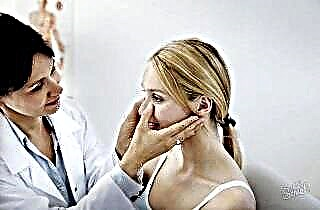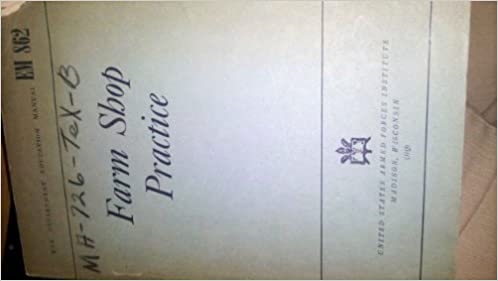According to statistics, the fungus affects every fifth inhabitant of our planet. The increase in the number of such diseases is caused by unfavorable environmental conditions and a decrease in the level of immunity of the population. The nose, as the main respiratory organ, regularly comes into contact with irritants, and it is through it that many different infections enter the body.
Causes of the disease
 Fungi are pathogenic microorganisms. An infectious disease caused by parasitic fungi is called mycosis. Today science knows up to 500 species of mushrooms. Mycoses of the nasal cavity are the result of the vital activity of fungi of the genus Candida, Aspergillus and Penicillum. Mold micromycetes Alternaria, Rhizopus, Absidia are less common.
Fungi are pathogenic microorganisms. An infectious disease caused by parasitic fungi is called mycosis. Today science knows up to 500 species of mushrooms. Mycoses of the nasal cavity are the result of the vital activity of fungi of the genus Candida, Aspergillus and Penicillum. Mold micromycetes Alternaria, Rhizopus, Absidia are less common.
Factors contributing to the onset of fungal inflammation:
- mechanical violation of the integrity of the nasal passages;
- swimming in muddy muddy reservoirs;
- overuse of nasal medications;
- dental caries;
- immunodeficiency;
- diabetes;
- AIDS;
- oncopathology;
- a long course of taking antibiotics;
- the use of anticancer and hormonal drugs;
- chronic diseases.
Signs and treatment
A fungus in the nose manifests symptoms in the form of:
- incessant itching;
- frequent sneezing;
- difficulty breathing;
- abundant discharge, different in color and consistency;
- open bleeding wounds on the nasal mucosa;
- films on the front of the nostrils;
- polyps on the nasal septum;
- unpleasant odor from the nose;
 frequent headaches.
frequent headaches.
The symptoms of the disease and their intensity depend on the type of fungus in the nose and the neglect of the disease. Signs of the vital activity of some fungi are similar to the manifestation of acute respiratory viral infections and other diseases of the nasopharynx, therefore, in order to establish an accurate diagnosis, it is important to consult a specialized doctor in time. The specialist will write a referral for laboratory culture from the nasal mucosa, X-ray or computed tomography. Based on the results of these tests, the doctor will tell you how to treat your specific disease.
Modern medicine has a lot of tools for the treatment of fungal infectious ailments: antibiotics, oral tablets and drops, as well as nasal sprays, drops and ointments for topical use.
The average duration of the course of treatment is two months, with a neglected clinical picture, therapy can last about six months. Chronic fungal infections are treated with surgery.
Folk remedies and herbal medicine
There are other ways to remove fungus in the nose - treatment with a folk remedy. Proper therapy should primarily focus on strengthening the immune system. Folk recipes will help cure the fungus at the initial stage of the disease. If the disease has become chronic, the patient will be helped exclusively by a medication that your doctor will prescribe individually. Attempts to get rid of the fungus in the nose on their own without establishing an accurate diagnosis are fraught with serious health consequences.
 The alkaline environment is the enemy of fungal infections. Therefore, rinsing the nasal passages with a solution of regular baking soda will be very effective against fungus. Decoctions of medicinal herbs are also widely used for washing, they have an antiseptic and healing effect. Freshly prepared vegetable juices are used to lubricate the affected areas of the mucous membrane.
The alkaline environment is the enemy of fungal infections. Therefore, rinsing the nasal passages with a solution of regular baking soda will be very effective against fungus. Decoctions of medicinal herbs are also widely used for washing, they have an antiseptic and healing effect. Freshly prepared vegetable juices are used to lubricate the affected areas of the mucous membrane.
All these procedures should be used in combination, keeping in mind that folk remedies are not a panacea, but they can perfectly complement the main treatment regimen with medications and strengthen immunity.
Fungus in the nose - signs of sinusitis
- Fungal sinusitis is a rare disease that occurs in people with immunodeficiency disorders and diabetes mellitus. Its appearance is provoked by Mucor spp. and Aspergillus spp. Distinguish between invasive and superficial sinusitis.
- With invasive sinusitis, the disease develops in a short time, affects the soft tissues of the face and nose, the skull, and is fatal. The patient suffers from severe pain, swelling of the face, bloody nasal discharge, fever. Myceliums affect the vessels, as evidenced by the appearance of numb skin areas of black and gray color on the patient's face. This disease is treated exclusively by surgery and long-term use of antifungal drugs.
- Superficial fungal sinusitis is a consequence of histoplasmosis, blastomycosis, cryptococcosis, rhinosporidiosis, mucorosis, sporotrichosis and is caused by Aspergillus spp. A warm, moist environment facilitates the growth of mushrooms. The disease can pass as a complication of bacterial sinusitis. Fungi develop into pus, which accumulates in the sinuses. Treatment consists of opening and cleansing the paranasal sinuses; antifungal drugs are used on an individual basis.
- Allergic fungal sinusitis is a disease that often occurs against the background of bronchial asthma, allergic rhinitis, urticaria. The body's tendency to allergic reactions provokes the development of allergies to fungal colonies that exist in the human nose at the normal level. As a result, a person develops allergic sinusitis of fungal origin.
- Mycosis of the paranasal sinuses is a disease whose symptoms are very similar to sinusitis. The ailment is accompanied by shortness of breath, the outflow of mucus from the nostrils and migraine. Snot are released periodically according to the neglect of the disease, their color differs depending on the type of fungal infection. So, when the nasal cavity is affected by the Candida fungus, the mucus coming out of the nose has a curdled consistency. The result of the vital activity of molds is a thick, fetid mucus of a greenish tint. Mycosis of the paranasal sinuses is characterized by a feeling of heaviness in the sinus, resembling a blockage by a foreign body.
 Fungal infection is diagnosed exclusively with the help of laboratory tests and is treated with anti-fungal drugs without the use of antibiotics. Self-medication is categorically contraindicated. Immunodeficiency, diabetes, diseases of the digestive tract provide a suitable environment for the emergence and development of fungal infections, therefore, therapy should be comprehensive.
Fungal infection is diagnosed exclusively with the help of laboratory tests and is treated with anti-fungal drugs without the use of antibiotics. Self-medication is categorically contraindicated. Immunodeficiency, diabetes, diseases of the digestive tract provide a suitable environment for the emergence and development of fungal infections, therefore, therapy should be comprehensive.
Mushrooms have pronounced allergic properties, therefore, it is advisable to prescribe antiallergic and antifungal therapy in combination. Complete recovery of the patient can only be confirmed by repeated mycological analysis after undergoing the main course of treatment.
Prevention of mycosis
Since the main cause of fungi in the nose is immunodeficiency, health promotion is the main preventive method.
Simple rules of hygiene, acupressure, hardening, taking vitamins, immunostimulants, herbal medicine, as well as comprehensive nutritious nutrition will significantly improve well-being and help the body increase its resistance to infections.
It is important to remember about the timely treatment of teeth, since caries and chronic inflammatory processes in the upper jaw are transformed into sinusitis.

 frequent headaches.
frequent headaches.

